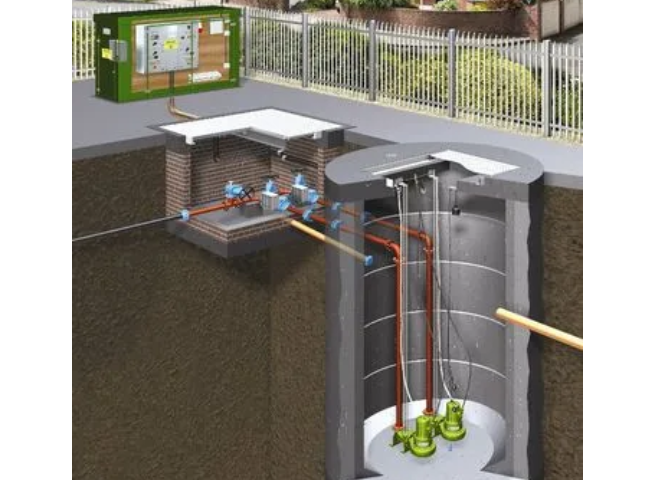Sewage lift application scenarios
The use scenarios of sewage lifters are very wide. They are mainly used in places where sewage cannot be discharged directly into municipal drainage pipes by gravity. The following are the main use scenarios of sewage lifters:
1. Basements of various buildings
Domestic sewage lifting: In the basements of buildings such as residential areas, office buildings, and hotels, domestic sewage (such as sewage from toilets, tea rooms, laundry rooms, etc.) needs to be lifted and discharged through sewage lifters because they are located lower than the municipal drainage network.
Commercial facility sewage lifting: The basements of commercial facilities such as underground shopping malls, gyms, restaurants, and shower rooms often need to install sewage lifters to ensure smooth sewage discharge.
2. Villas and single-family houses
Basement domestic sewage: The basements of villas and single-family houses usually include living facilities such as toilets and bathrooms. The sewage generated by these facilities needs to be collected and lifted and discharged through sewage lifters.
Special purpose spaces: such as saunas, garages, etc., may also need to install sewage lifters to treat the generated sewage.
3. Public service facilities
Subway stations and underground passages: The sewage discharge in the toilets, underground crossings, and other areas of subway stations often relies on sewage lifters.
Service areas and other municipal construction: In the reconstruction of high buildings or the construction of service areas, sewage lifts may also be needed to treat the generated sewage.
4. Special environments
Places far away from drainage risers: Places such as houseboats, RVs, mobile toilets, etc. that are far away from municipal drainage pipes also need sewage lifts to treat sewage.
Rainwater collection and utilization: In some areas with abundant rainwater resources, sewage lifts can also be used to collect rainwater and use it for farmland irrigation or garden watering after treatment.
5. Small commercial buildings
Schools, hotels, gyms, etc.: These places are small in scale, but they also need to treat a certain amount of sewage, so small sewage lifts are usually used to meet the needs.
6. High-end applications
Intelligent control: Modern sewage lifts are often equipped with intelligent control systems that can monitor sewage levels in real time, automatically start and stop pumps, etc., which improves the convenience and efficiency of use.
Environmental protection and energy saving: Some high-end sewage lifts also focus on environmental protection and energy-saving design, such as using silent technology to reduce noise pollution and using energy-saving motors to reduce energy consumption.

In summary, the use scenarios of sewage lifts cover multiple fields. With the acceleration of urbanization and the improvement of people's requirements for environmental protection, the application prospects of sewage lifts will be broader.




